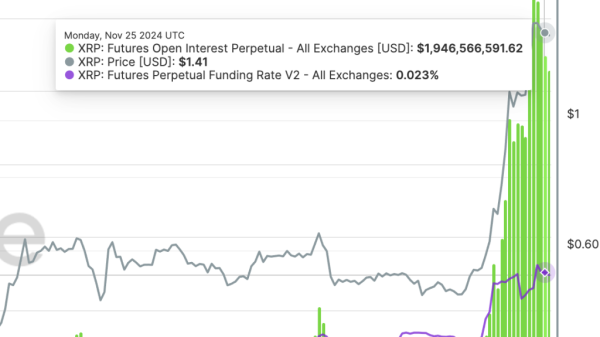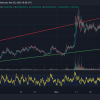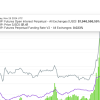The Dollar Index, an indicator used to measure the general value of the US dollar against a basket of major currencies, has recently been under significant pressure. So much so that it has notably fallen below the 105.00 level, placing it among the major international news. This article aims to provide an in-depth analysis of this event, drawing information from reputable finance news sources.
In the world of financial markets, the US Dollar Index is an integral tool for a multitude of investors and traders. It mirrors the US dollar’s performance against six of the freest floating currencies globally, namely the Euro (EUR), the Japanese yen (JPY), the British pound (GBP), the Canadian dollar (CAD), the Swedish krona (SEK), and the Swiss franc (CHF). The recent drop below 105 is regarded as a significant market event because the index was relatively stable for a long time, and such a drastic change could signify mounting pressure on the US dollar.
Indeed, these recent downticks may be interpreted as signs of underlying weaknesses in the world’s leading economy. Such weaknesses may have resulted from several factors that adversely affect dollar strength. These include, notably, the ongoing impacts of the Covid-19 pandemic, inflation concerns, and the Federal Reserve’s monetary policy adjustments, which have stirred up some shifting dynamics in the international currency market.
However, it is noteworthy that economic indicators don’t flow in one single direction. From a broader perspective, these recent events reveal a much more complex picture. On the one hand, the US dollar’s weakness might seem alarming for sectors that heavily rely on a strong dollar, such as imports and foreign investments. On the other hand, it might also create opportunities for other sectors, particularly exports, as a weaker dollar would make US goods and services cheaper and more competitive overseas.
Regardless of the sector in question, investors around the globe continuously monitor the Dollar Index. The reason is simple: the Dollar Index’s fluctuations could set off a ripple effect across all financial markets and commodities trades, including gold, oil, and stocks. For instance, gold often moves inversely to the Dollar Index. That means a weaker dollar often leads to stronger gold prices, thereby providing market participants with alternative investment opportunities.
In the dynamic arena of global currency trading, the recent drop in the Dollar Index below 105 underscores the nature of the financial markets being subject to rapid changes. It further highlights the importance of investors staying informed and flexible in their investment decisions.
The shifts in the Dollar Index are also indicative of global power politics. Specifically, they highlight the intricate interplay between economic performance and political stability, symbolizing the delicate balance of power dynamics in the global financial landscape.
In conclusion, the Dollar Index’s recent fall demonstrates the fluctuating nature of financial markets and the influence of diverse factors. Whether it’s political changes, economic indicators, or even global crises, the Dollar Index serves as a crucial barometer in measuring the health of the US Dollar and, by extension, the world’s largest economy. It will thus continue to command the attention and interest of market participants across the globe. Despite its recent decline, it remains to be seen what future direction the Dollar Index will take, further emphasizing the need for ongoing vigilance and analysis






























